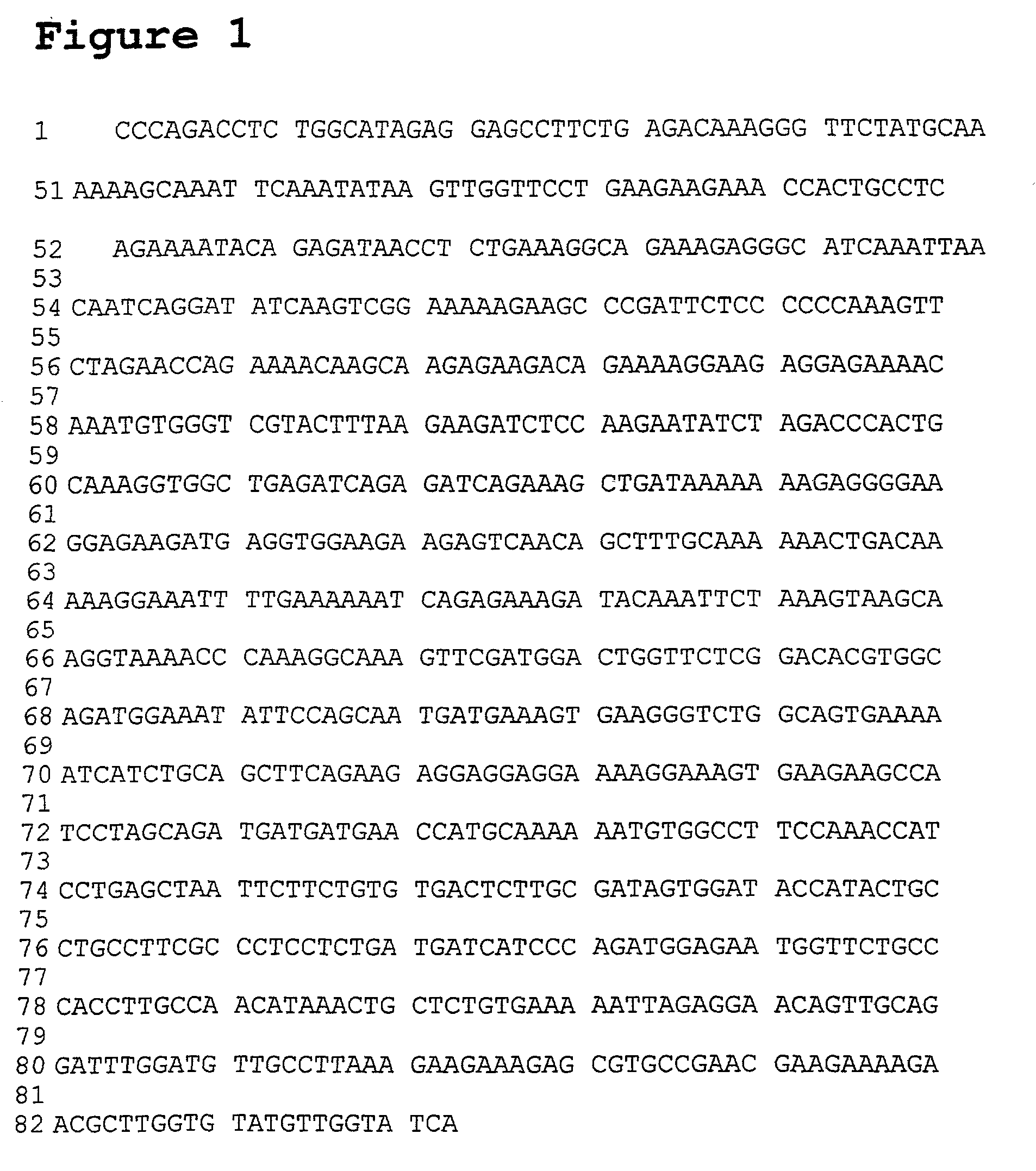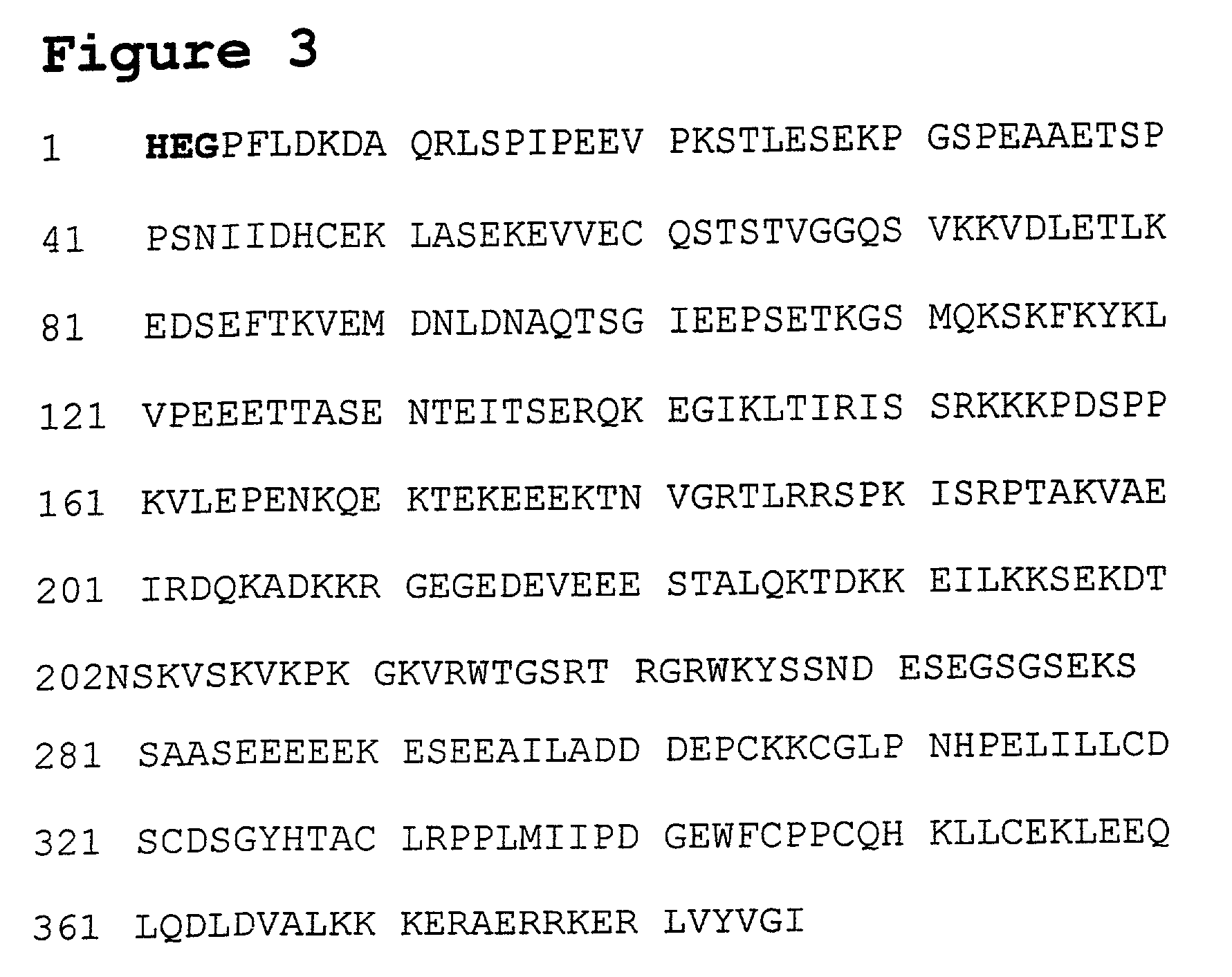Apoptin-associating protein
- Summary
- Abstract
- Description
- Claims
- Application Information
AI Technical Summary
Benefits of technology
Problems solved by technology
Method used
Image
Examples
Embodiment Construction
[0034] We have used the yeast-2 hybrid system (Durfee et al., 1993) to identify Apoptin-associating cellular compounds, which are essential in the induction of apoptosis. The used system is an in vivo strategy to identify human proteins capable of physically associating with Apoptin. It has been used to screen cDNA libraries for clones encoding proteins capable of binding to a protein of interest (Fields and Song, 1989; Yang et al., 1992). The invention provides a, for example, novel Apoptin-associating protein, which is named Apoptin-associating protein 2 abbreviated as AAP-2. The invention also provides a method for inducing apoptosis through interference with the function of this newly discovered AAP-2 protein or functional equivalents or fragments thereof and / or the induction of apoptosis by means of (over)expression of AAP-2 or related gene or functional equivalents or fragments thereof. In addition, the invention also provides another Apoptin-associating protein, named AAP-3.
[...
PUM
| Property | Measurement | Unit |
|---|---|---|
| Fraction | aaaaa | aaaaa |
| Cell death | aaaaa | aaaaa |
| Cell proliferation rate | aaaaa | aaaaa |
Abstract
Description
Claims
Application Information
 Login to view more
Login to view more - R&D Engineer
- R&D Manager
- IP Professional
- Industry Leading Data Capabilities
- Powerful AI technology
- Patent DNA Extraction
Browse by: Latest US Patents, China's latest patents, Technical Efficacy Thesaurus, Application Domain, Technology Topic.
© 2024 PatSnap. All rights reserved.Legal|Privacy policy|Modern Slavery Act Transparency Statement|Sitemap



